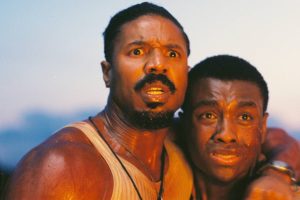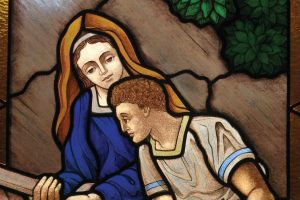c. 2013 Orange County Register
LAGUNA BEACH, Calif. (RNS) One morning each week, I ascend the outdoor staircase on the side of our little church and enter the Upper Room – a cozy, loftlike space above the pastors’ offices set apart for prayer.
Once inside, I turn up the volume on my phone, choose “Taize” or “Gregorian Chants” from the iTunes playlists, pull out my knitting and begin to pray.
The subject of my silent prayers is usually the person for whom I’m making the scarf or blanket or shawl. The prayers are as simple as the stitches and after a minute or two, they become as steady and unconscious as my breathing:
“Lord, I lift to you your child.” And then I say his or her name.
Lately, while I’ve been knitting skeins of buttery-soft alpaca-and-silk yarn into a long, sherbet-hued wrap, the name I’ve meditated on is “Margaret.”
I picture myself standing or sitting before the throne of the Creator, cradling Margaret in my arms or in my lap, literally lifting her up to a loving God to embrace.
Sometimes I pray for her husband, her doctors and even her ever-present poodle, Hershey. But usually, I just say her name: Margaret.
God knows everything about her and God knows far better than I what Margaret – or anyone for whom I’m praying – needs, so I try not to clutter the prayers with my own words.
Often the prayers become synced with my breath, in much the same way the ancient church fathers and mothers taught us to do with the “Jesus Prayer:”
“Jesus Christ,” (Inhale)
“Son of God,” (Exhale)
“Have mercy on me,” (Inhale.)
“A sinner.” (Exhale.)
“Lord,” (knit one, inhale.)
“I lift to you,” (knit two, exhale.)
“Your child,” (pearl one, inhale.)
“Margaret.” (pearl two, exhale.)
Every stitch, every breath, a prayer.
As I understand it, we, the faithful, are meant to be the hands of God in the world – hands that help and heal and comfort; hands that defend the defenseless, point out injustice and join with others to bring about change for the better.
If we can be God’s hands, we also can be God’s feet.
That idea is what motivated me to register and start training for the Susan G. Komen 3-Day Walk for the Cure in San Diego next month – a three-day, 60-mile trek to raise awareness and funds to combat breast cancer.
I’ll be walking Nov. 15-17 with friends and with strangers, all of whom have been touched in some way by breast cancer, which, according to the World Health Organization, claims nearly a half-million lives each year worldwide.
Some of us are survivors. Some of us are fighting for our lives. Some of us have lost loved ones to cancer or have friends and family who still are battling the disease.
We will walk 20 miles a day for three days; that’s about 120,000 steps.
Every step, every breath, a prayer.
For Helen Falsani, my mother, who learned she had breast cancer seven years ago this month. (She underwent a radical mastectomy and was cancer-free until it resurfaced late last year.)
For my dear friend Margaret Feinberg, the acclaimed Christian speaker and author, who received the frightening diagnosis during the summer and is undergoing treatment now.
For Michelle Buessing, our 3-Day team leader, who was diagnosed at 32 when she was a mother of a 2-year-old daughter and an 11-month-old, and who was still breastfeeding. (She is now in remission and awaiting the arrival of her third child.)
I’ll offer prayers of thanks.
For the life of Patti Norton – my mother’s best friend, my brother’s godmother and one of the most influential people in my life – who was diagnosed in 1976 and died at age 49, five years later, not long after Susan G. Komen herself succumbed to the disease.
For the advances that have been made in treatment since Aunt Patti died, and for organizations such as the one established as Komen’s legacy, that have been instrumental in funding research toward a cure.
Every prayer, every breath, a step toward a cure.
Walking meditation has a long history in various religious traditions, from Christian labyrinths to the Zen Buddhist kinhin, a practice that means, literally, “walking the talk.”
A friend and I recently started training for the 3-Day with a five-mile stroll along the ocean. We talked the whole time – about her mother and mine, about Michelle and Margaret, and about other friends who have fought or are fighting the disease.
The conversation is good practice for the 3-Day, where MP3 players, cellphones and headphones are not allowed. It’s good for our physical selves – a recent study found that women who walk an hour each day are 14 percent less likely to get breast cancer than those who don’t. But it’s also a good spiritual discipline.
We tell stories and talk about people, and in doing so, we lift them up to God. We walk. We talk. We breathe. We pray.
And the road – the journey itself – becomes a sacred space.
(Cathleen Falsani is the faith & values columnist for the Orange County Register. You can follow her on Twitter @godgrrl.)










